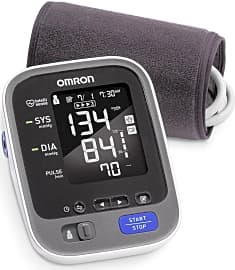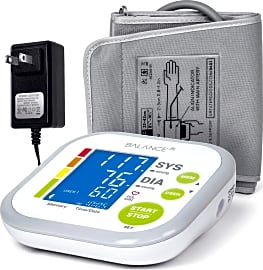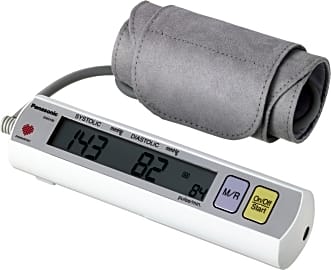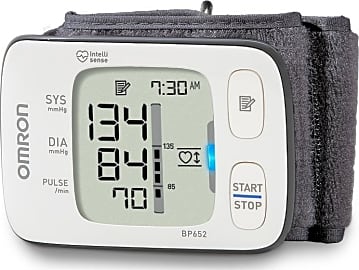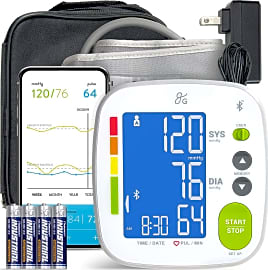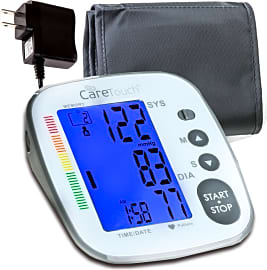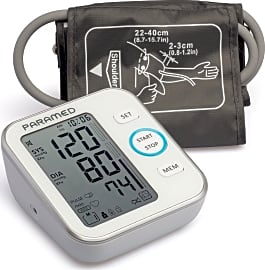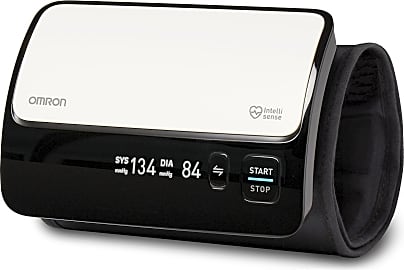The 10 Best Blood Pressure Monitors

This wiki has been updated 39 times since it was first published in March of 2015. We've taken the pulse of the best blood pressure monitors on the market to help you keep a close watch on your day-to-day health. Our selection of devices includes those designed for both daily and casual use, upper arm and wrist cuffs, and Bluetooth-capable options. Just remember to follow the directions, or no matter how great the model, you could get inaccurate results. When users buy our independently chosen editorial choices, we may earn commissions to help fund the Wiki.
Editor's Notes
July 28, 2020:
While we already have wikis for the best monitors with Bluetooth as well as a list for the best wrist monitors, these may not be convenient for everyone - not everybody wants a Bluetooth BP monitor for instance. Our selection here is meant to offer a variety of options for everyone and, from monitors with Bluetooth to those without, and between BP machines with cuffs made for your wrists versus the cuffs that go around your upper arm, we have a relatively well-balanced list here that I didn’t want to upset during this update.
For the products I had to remove for quality purposes, I found suitable and relatively similar replacements. The Lotfancy 4-User for instance was struggling with accuracy, with some readings being significantly higher when compared to hospital-grade monitors. Its waiting time between uses was also just ridiculous, and so I’ve replaced it with the Lazle BP Machine, which can also store readings.
I’ve also removed the Bluetooth enabled QardioArm A100 because the app was plagued with issues. It’s a shame because the device itself looks great - it’s unobtrusive and wireless and it seems to work well initially, at least. Bluetooth pairing was also unreliable and finicky with this model, and so I’ve replaced it with the Greater Goods Kit which operates more like a conventional digital model, and doesn’t rely on Bluetooth to function; however, you can use its app to upload readings and track them over time.
To make things a little interesting, I’ve added a special option for a relatively novel and unique model, the Omron HeartGuide, which was FDA cleared back in 2019, being the first blood pressure monitor wrist watch to have been. Do bear in mind that the watch uses an inflatable cuff to take your measurements, and though this may make it feel a little bulkier than your average smartwatch, it’s certainly more conspicuous than a larger BP monitor, plus this technology is still in its earlier stages, and it’ll be interesting to see where the design goes from here. You may find it more practical to wear it for one or two days every week to monitor how your routine impacts your blood pressure throughout the day.
Unlike the HeartGuide which uses a sphygmomanometer, many cheap fitness trackers and watches on the market that claim to measure blood pressure will often either lie or may use a PPG (photoplethysmogram) sensor – a less accurate measurement technique. This is different from a smartwatch pairing with your Bluetooth enabled BP monitor.
Perhaps a couple of genuine gamechangers are the ASUS Vivowatch BP, and a model called Biobeat by an Israeli company of the same name, neither of which I’ve added special honors for, but both of which are worth keeping an eye on for the future. Like the HeartGuide, Biobeat was accurate enough to have gained FDA approval a few months after the HeartGuide – making it the first cuffless model to have done so– while the Vivowatch BP isn’t FDA approved. I’ve looked at some of the studies on Biobeat and the results look promising, though I would like to read some unbiased reviews from cardiologists first, like I’ve seen with the Heart Guide, before I consider adding it to the list.
March 27, 2019:
Knowing and keeping your blood pressure under control is very important to your overall health, which is why it can be a good idea to keep one of these blood pressure monitors on hand for daily or periodic use. With the advance in digital technology, there really isn't any reason someone needs to keep an old analog model on hand, plus they are almost impossible to use for self-testing, so we haven't included any on our list. You will still find a variety of different styles to suit every need. If you are mobility-impaired or simply prefer not to use the standard upper-arm model, you'll appreciate the Omron 7 Series, which is designed to go around your wrist. If you want something slim and compact, without any excess wires, take a look at the Omron Evolv and QardioArm A100, which both have the display attached directly to the cuff. If you want to be able to track trends and share data with family members of perhaps a doctor, the Omron 10 Series, Omron Evolv, and QardioArm A100 all offer the ability to do so by pairing them with a mobile device via Bluetooth, though we must warn you that some people find the added functionality somewhat difficult to use. Many of the other options on our list also store 100 or more readings, but won't create a trend graph like the models that pair with apps do. Visually-impaired people will be best served by the Paramed Upper Arm, since it can be set to relay readings audibly.
Special Honors
Omron HeartGuide Japanese medical technology company Omron makes some of the most accurate and sophisticated BP machines on the market, so it’s fitting that they’ve also created the world’s first FDA-approved blood pressure wristwatch monitor. The HeartGuide by Omron was even included in Time magazine’s 2019 list of best inventions, and we can see why – with this device, you finally have a convenient and inconspicuous way to monitor your heart rate and blood pressure around the clock, and observe how your habits and lifestyle affect readings. omronhealthcare.com
Natural And Unnatural Responses
You wait around one of his rooms while he's off eating lunch or finishing up a round of golf.
You get cut off in traffic. Your boss dumps a new, impossible deadline on your desk. Your spouse utters the words "second honeymoon." Your daughter claims she met the man of her dreams at the concert she went to last night. All of these things will undoubtedly cause a spike in your blood pressure.
Now, there's nothing inherently wrong with that; increased blood pressure in times of stress is actually normal. Your body's fight or flight response engages in times of stress, flooding your blood with adrenaline and cortisol. Those hormones increase your heart rate and constrict your blood vessels, which, in turn, turns up your blood pressure. The effect only lasts as long as you're exposed to a stressor stimulus, after which your body begins to regain homeostasis.
This kind of spike in blood pressure is circumstantial, to be sure, and it's very much on the safe side, provided you aren't suffering from other heart conditions at the time that an increase in stress could exacerbate. You could detect some such heart conditions–and catch them early enough to seek effective treatment–by utilizing a sphygmomanometer, more commonly called a blood pressure monitor.
You've likely experienced these things when you go to the doctor's office. You wait around one of his rooms while he's off eating lunch or finishing up a round of golf. At some point in your waiting, a nurse comes in and takes your blood pressure. She straps a Velcro arm band around your upper arm, squeezes a little rubber ball that causes the arm band to tighten, places a stethoscope against the inside of your elbow, and releases a valve on the armband that loosens it back up, all while staring at what looks like a big thermometer on the wall.
These blood pressure monitors eliminate the nurse and the big wall-thermometer, and instead use the air inside the arm band to measure vibrations in your arterial walls. Those vibrations activate a transducer that converts them to electrical signals measured by your monitor.
Despite the fact that these monitors, known as oscillatory blood pressure monitors, don't use mercury pressure as a measuring tool, their readouts still adhere to the traditional mm Hg numbers by which medical associations around the world talk about blood pressure.
Pressure By The Numbers
Understanding the readout of your blood pressure monitor is vital to understanding the state and health of your heart. As mentioned above, blood pressure monitors measure blood pressure in millimeters of mercury, both at systolic and diastolic points in your heartbeat.
The diastolic measurement is an evaluation of the pressure in your arteries between heartbeats, and it's the bottom number in the readout.
The systolic measurement is the beat during which your heart pumps blood out through your arteries, and it's the top number in the readout. The diastolic measurement is an evaluation of the pressure in your arteries between heartbeats, and it's the bottom number in the readout. When you hear a nurse or doctor say, "120 over 80," that means 120mm Hg systolic pressure and 80mm Hg diastolic pressure.
It's important to measure these levels at a resting state, which might be why those nurses and doctors make you wait so long in the office; they let you rest for a while before taking any measurements.
Anything less than 120 over less than 80 is a good thing. That's considered normal (although it can get too low, as well). Once you get above that, you enter prehypertension pressures, which may not require medication, just a few lifestyle changes like an increase in exercise or an improvement in your diet. Anything above 140 over 90 and you've got yourself a case of hypertension. Your doctor will likely prescribe you something to lower your pressure while you make additional lifestyle adjustments.
The monitors on our list all give you accurate measurements, though some have bigger, better displays than others, and some can even send your readouts straight to your smartphone. Some can also wrap around your writs instead of your upper arm, as well, should you desire discretion in the event you need to keep the monitor on for a few days or more worth of measurements.
Pressure From Horse To Man
While the circulatory system has been the subject of medical curiosity for millennia, it was only in the last few hundred years that medical scientists began the study and understanding of blood pressure as it relates to human health.
Mercury is, after all, rather unsafe, and its mining practices are often unethical and dangerous.
The first measurement of an animal's blood pressure involved a horse rather than a man. Reverend Stephen Hales, in 1733, stuck a glass tube perpendicularly into a horse's artery and measured the height of the blood that rose in it with each pump.
Almost 150 years later, Samuel Siegfried Karl Ritter von Basch (a.k.a. the man whose name alone will cause a spike in blood pressure), invented the first sphygmomanometer.
These early blood pressure monitors utilized actual mercury for their measurements, a practice which has largely fallen out of favor today for environmental concerns. Mercury is, after all, rather unsafe, and its mining practices are often unethical and dangerous.
For those reasons, manufacturers turned to digital means of measurement, utilizing pressure sensitivity not too dissimilar to the operations of a microphone to listen in on the pressure pumping through your blood vessels.


